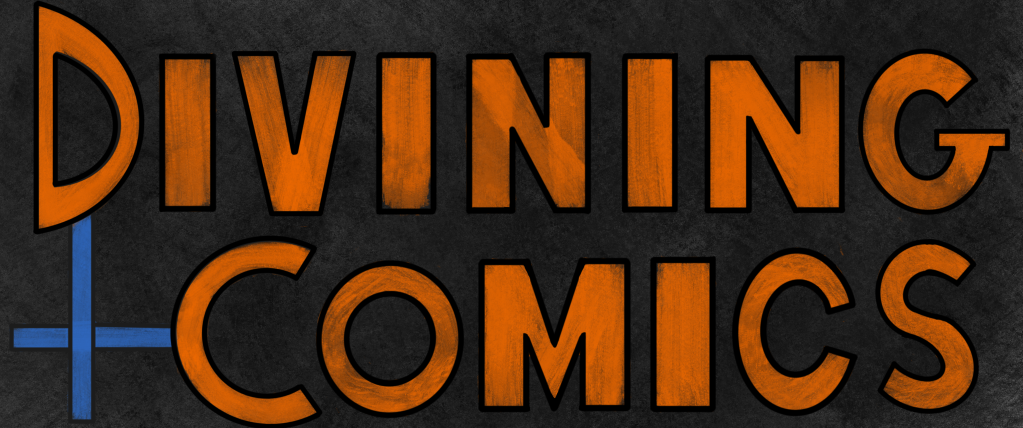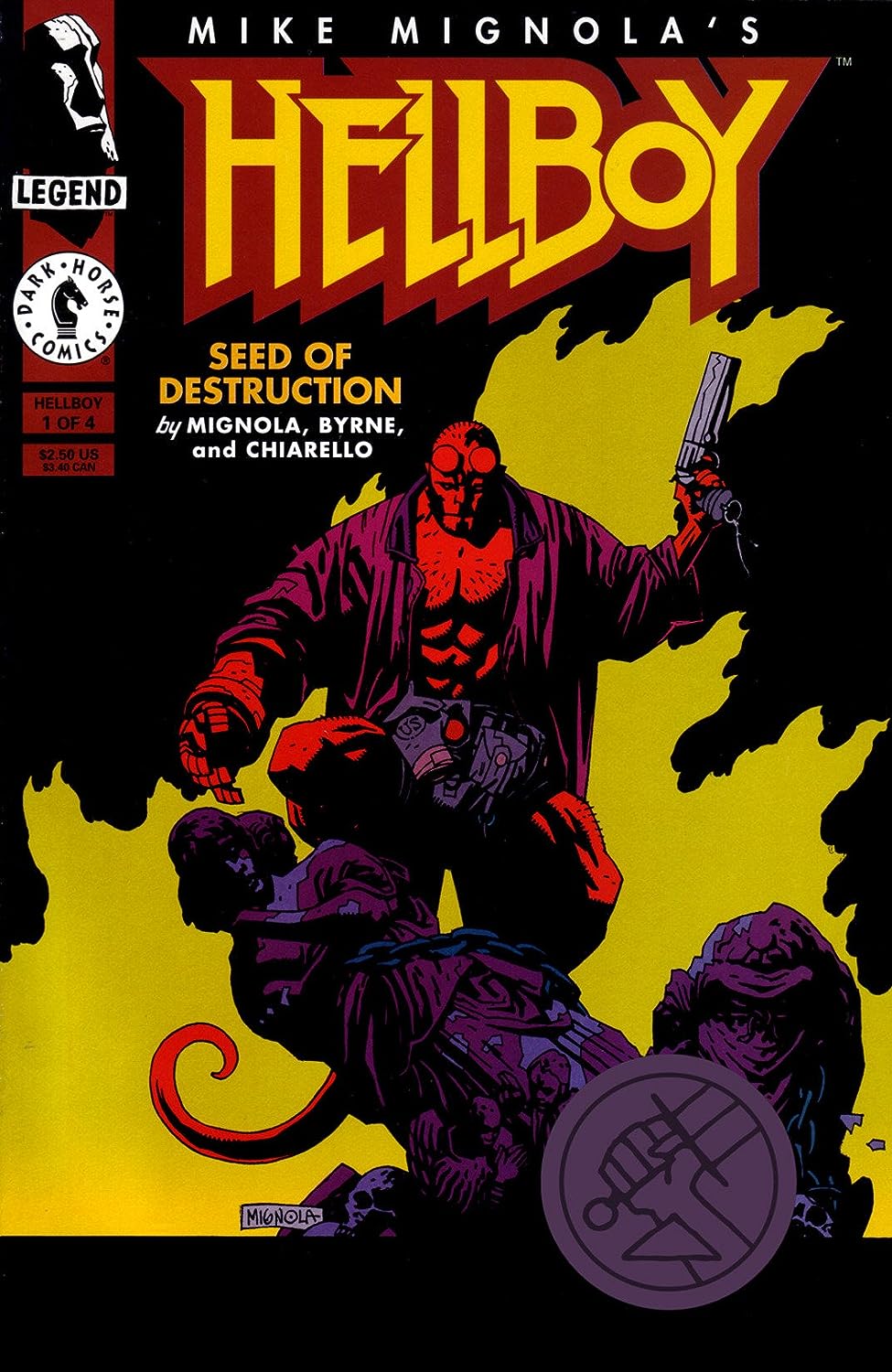Hellboy: Seed of Destruction Chapter One and Chiaroscuro Lighting
The human brain is a powerful hub of magic. It is able to take a two-dimensional image of light reflected onto a retina and conjure a three-dimensional field. This “illusion of depth” spell requires certain components. You need perspective, parallax, focus, and occultation. As a final ingredient, artists (magicians of the comic book world) use the interplay of light and shadow.
One artistic school of light and shadow manipulation that arose during the Italian Renaissance is “chiaroscuro”, which is Italian for “light dark.” It is the use of extreme contrasts, bright light areas and deep shadows, in composition. This style has a multi-faceted effect on the reader, as detailed below. Comics can use these same techniques, and few are as well-trained in this spell as Mike Mignola, the creator of the Hellboy series. Chapter One of the Seed of Destruction arc, with story and images by Mike Mignola, script by John Byne, and colors by Mark Chiarello, demonstrates a mastery of chiaroscuro comics.

Look at these faces. Often, comics will use color gradients to achieve depth. Not Mignola and company. The faces are colored in two tones: the color of the character’s flesh, and black for shadows. Despite this simplicity, the magic works. Our brains interpret these faces as having depth. Notice how in this drawing, the hypothetical light source is consistent. All of the faces are lit on the reader’s left and in shadows on the reader’s right. This consistency helps the reality of the panel and doesn’t break the illusion.

The same principle applies to architecture. An outline, a color for the areas that are lit, and deep, inky black for the shadows. Because of Mignola’s magic mastery, our brain fills in so many details that aren’t actually there. We the readers help finish the illusion, entirely subconsciously. The trees on the right side of the panel are the same black as the building, with no border separating the two. Yet, our brains can separate the smooth, angular lines of a building and the small, staccato leaves. The finer details, like drawing or coloring every single leaf or branch, is actually unnecessary.

In this panel, bright and dark are juxtaposed to divide foreground, midground, and background. When one thing is in front of another in a drawing or image, our brains will interpret that to mean the one in front is closer and the one that is partially covered is far away.1 Here, the foreground is the brightest part of the drawing. The midground is entirely in black. The background is a color somewhere between the two. The emotion on Dr. Bruttenholm’s face is thus quite literally foregrounded, and details that are less necessary to this particular moment, such as the setting or details on Hellboy, are literally backgrounded.
Here, the chiaroscuro lights and shadows achieve the illusion of depth through definition. The “lit up” segments in this drawing don’t correlate to the way anything could be lit up in real life. How could the light be behind and below the frog creature, but also above and behind Hellboy? Instead, the shadows are used as texture. They create musculature. You can see the frog monster’s biceps and triceps, and the rippling and tense muscles along Hellboy’s back. Realism and depth are accomplished with only solid blacks and monotone colors.


Depth isn’t all that chiaroscuro can do. It also can draw the eye right to where the artist wants. It’s like a magician making their audience look at their right hand while the left does the trick. Here, a chunk of black in a bright page almost forces you to look right at young Hellboy. It is a black hole, whose gravitational pull is irresistible to vision. The soldier and the setting are almost incidental to the main import of this image.

The opposite can work as well. In a big black chunk a bright spot breaking it up will draw the eye. It’s a single flashlight shining through the darkness. The professor’s left eye, shrouded in black, is much more noticeable than his right, which is well-lit. The reader is drawn in to the madness-inducing fear of whatever the professor is scared of.

Mignola’s mastery of light and dark’s power to draw the eye is on display here. Both techniques are used in the same panel. The reader’s eye is drawn to both the bright light and to the deep shadow. There are two main elements here, Hellboy and the frog monster. One is the biggest chunk of inky black in the drawing. The other is the brightest part of the page, more radiant than the background and maybe even the white caption boxes. This is a veritable chiaroscuro yin and yang, drawing your eye back and forth between the two extremes.
Not many comic mages use as much black as Mignola. However, these same principles of light and shadow apply to brighter comics. When masterfully done, bright and dark spots are a wonderful technique to control the parsing out of information from the comic creators to the reader. Noticing this will take you on your next step in your journey of divining comics.
- This, by the way, is the a rule M.C. Escher breaks for his mind-bending illusions. ↩︎


Leave a comment